PASADENA, Calif. – In most neighborhoods, it’s impossible for a Porsche to be stealthy. Believe me, I know, I’ve street parked them in Portland. However, in the neighborhoods where people have the money to actually buy new Porsches, it’s a whole different, high-priced ballgame. They’re bound to be noticed and acknowledged, but don’t expect oohs and ahhs. That you can afford such a thing is expected in such ZIP codes as those here in Pasadena. Instead, the response will come down to a matter of taste.
And if you come rolling down a stately palm-lined street in a 2022 Porsche 911 GT3 painted in Shark Blue or Lava Orange with that showy swan-neck wing arcing off the back … well, some eyebrows might be raised. “What’s he trying to prove?” being heard in neighboring open-concept kitchens is a distinct possibility. On the other hand, maybe you couldn’t care less about what Barb next door thinks, and would just prefer a more subtle, tasteful look. Maybe you acknowledge the unlikelihood of ever visiting a track and therefore how unnecessary that wing will be. Maybe you haven’t thought wings looked cool since that Countach poster was replaced with Farah Fawcett.
Any of the above should help explain why the 2022 Porsche 911 GT3 with Touring Package exists (aka the GT3 Touring). Mechanically, it’s exactly the same car as the GT3, but with the swan-neck wing and fixed spoiler below replaced with a Carrera’s pop-up spoiler. There are then a number of non-functional visual differences: the lower fascia is body-colored instead of black, the windows are trimmed in high-glass anodized aluminum and the traditional GT3 script on the tail has been removed, with a chrome “GT3 touring” on the engine cover instead.

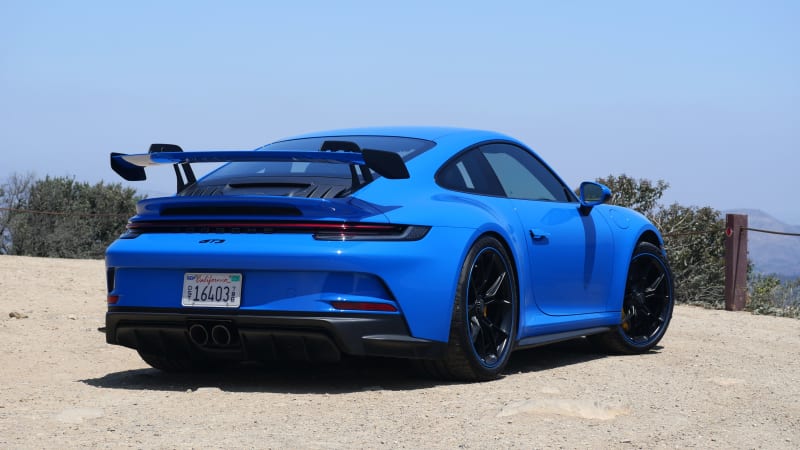
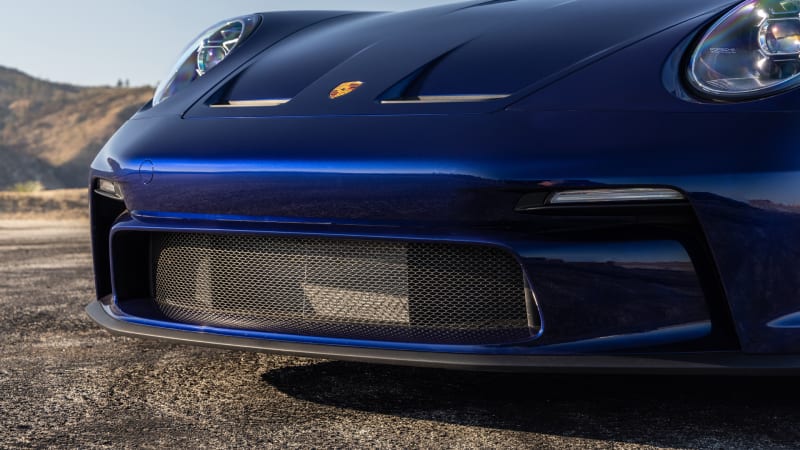
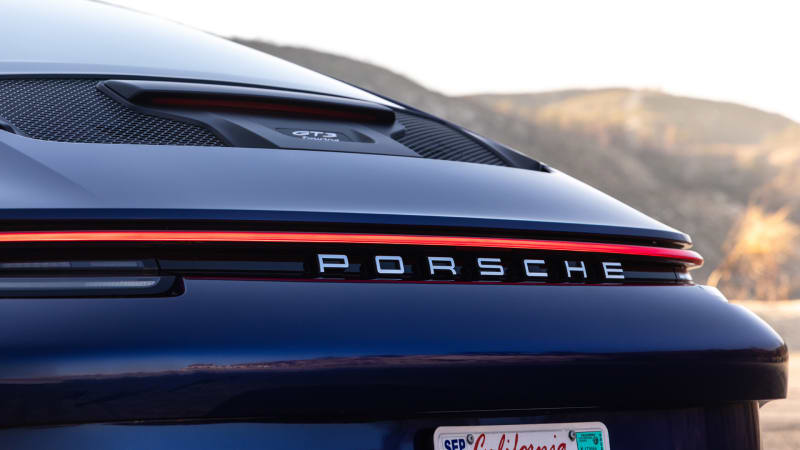
The interior is surprisingly not intended more for Touring, as the steering wheel, gear selector, center console lid and door panels are covered in black leather rather than Porsche’s Race-Tex suede-like material. The seat centers are also upholstered in a lovely textured fabric instead of Race-Tex, with the same black leather surrounding it on the bolsters regardless of seat selection (base four-way Sport Seats Plus, 18-way Adaptive Sport Seats Plus or our test car’s fixed recline Full Bucket Seats). Another key visual difference is the “chain embossed” leather applied to the dash and door sills that isn’t available on any other Porsche.
Importantly, the Touring is open to a wider degree of customization than the regular GT3, including the option of 14 additional color combinations that will be made available to order later this year. For those who have already put their order in, the choice was black.
And yep, that’s basically it. The Touring is otherwise just Clark Kent to the GT3’s Superman – same dude, different clothes. Its starting price is even exactly the same at $162,450. Although I exhaustively detailed the myriad upgrades and weight reductions in our recent GT3 Road Test Review, here are some of the highlights.
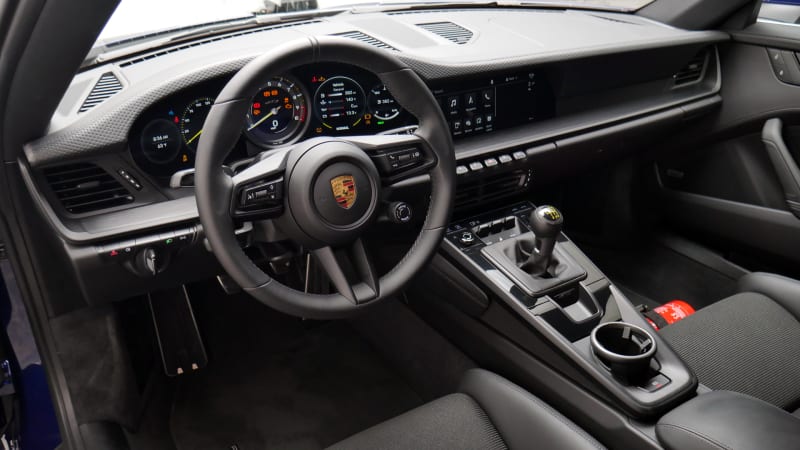
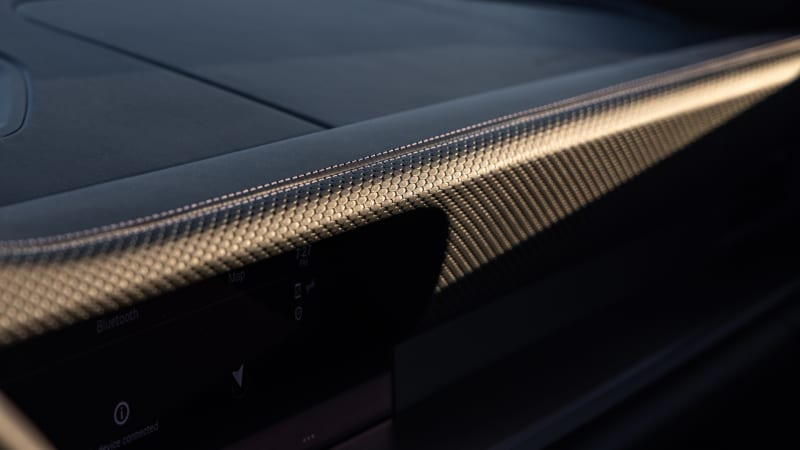
The engine is a naturally aspirated 4.0-liter flat-six that revs to 9,000 rpm and achieves its peak 502 horsepower at 8,400 rpm. It’s practically identical to what was in the old 911 Speedster and what’s currently used in the GT3 Cup race car. The transmissions are each down a gear from what you’d find in a Carrera: a seven-speed PDK dual-clutch like what we tested earlier in the GT3 and the six-speed manual in this GT3 Touring that will be available in California after all. None of the suspension components are shared with other 911s: the new-for-2022 double wishbone front suspension, the five-link rear suspension, stiffer springs and the use of ball joints in place of rubber throughout. The forged aluminum wheels are staggered in size with 20s up front and 21s in the back (the old GT3, including the previous Touring model, had 20’s at all corners).
Then there’s the weight savings: carbon-fiber-reinforced plastic used in various body components, lightweight window glass, no back seat, less sound deadening, a lithium-ion starter battery, lighter-weight brakes that get even lighter with the ceramic composite option, a stainless steel exhaust and the down-a-gear transmissions. The Touring obviously loses the wing and fixed spoiler, but then gains weight back with the motorized spoiler and interior leather. Porsche says the curb weight is exactly the same at 3,126 pounds with the manual.
Which brings us to aerodynamics. That swan-neck wing in collaboration with the fixed spoiler below produce 50% more downforce compared to the previous, similarly ostentatious GT3 wing, and of course neither of them are on the Touring. Porsche wouldn’t say just how much downforce is lost, but it is significant. That said, even if the Touring’s pop-up spoiler hardware is borrowed from the Carrera, there’s only one tilt angle (the most downforce-oriented one) and it deploys at a different, lower speed (effectively 49 mph versus 56 mph). The rest of the GT3 aerodynamics package is otherwise shared with the Touring, including the front splitter, hood air vents, fully paneled underbody and massively improved rear diffuser. In total, the GT3 Touring has double the downforce of the previous Touring, and indeed far more than other 911 models.
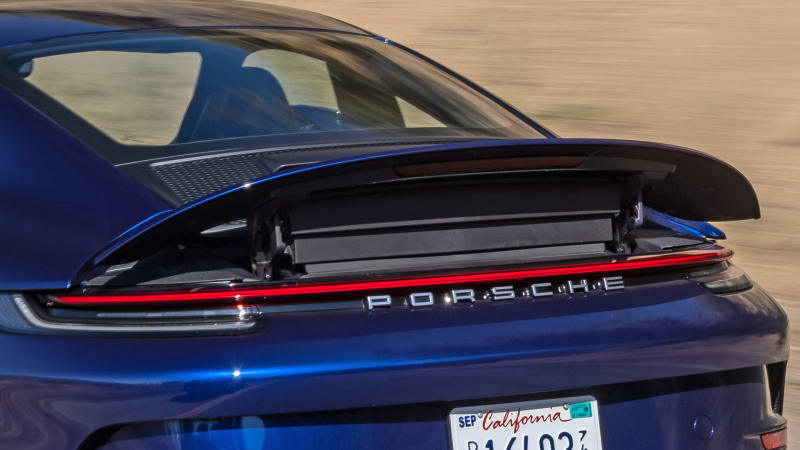
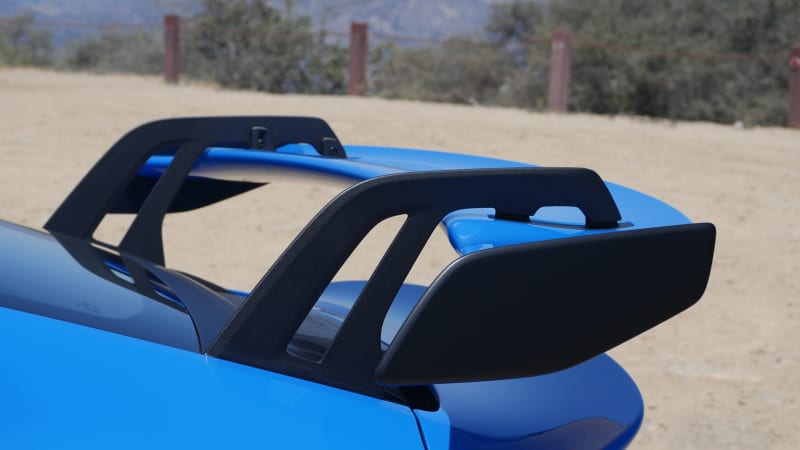
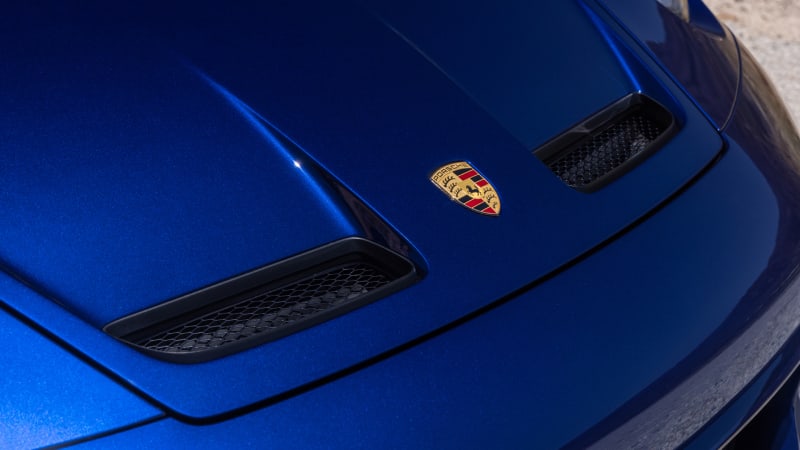
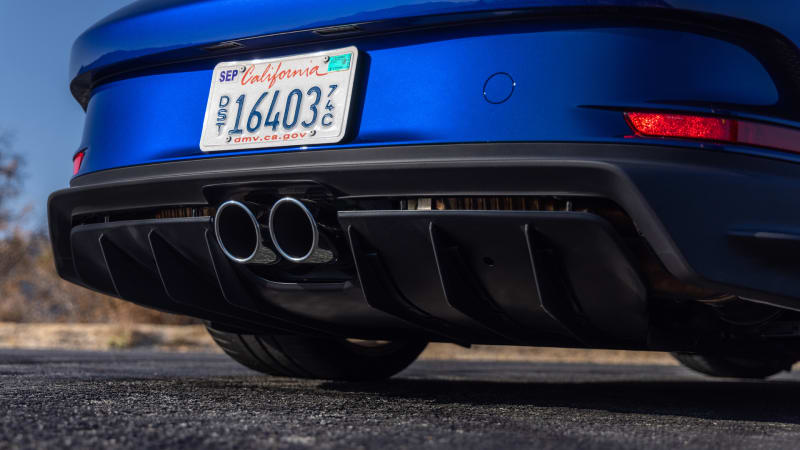
But here’s the important question: Can you actually tell the difference when winged versus unwinged? Simply put, no. Even on public roads as sensational as the famed Angeles Crest Highway or those sprinkled throughout Malibu, I might as well have been driving the same brilliant car. The two GT3s share a common lightweight, balletic feel with ultra-eager turn-in and shocking agility courtesy the standard rear-wheel steering. They’re equally visceral and communicative whether flicking your way up a tight, technical road at modest speeds, or blitzing along a series of esses fast enough where looking at the speedometer is just a bad idea.
Basically, if you intend to take your GT3 to the track, where it was truly meant to live, then the wing is an essential part of the package. If not, don’t worry about it. Stay classy, go with the Touring.
Really, the more obvious difference between the GT3 models we tested is the transmission. While the standard model had the PDK (now offered on the Touring, unlike the previous version), this Touring had the six-speed manual that includes a mechanical rear differential lock and the Auto Blip automated rev-matched downshift function. Sure, it’s a slower means of changing gears, but giving you full control is a lot more fun both in terms of your physical activity and the noises you’re hearing. While PDK is all too happy to upshift into fifth or sixth, you’re free to leave it in third or fourth and listen to the diverse orchestral tones of that naturally aspirated flat-six from 5,000 to 9,200 rpm.
It also couldn’t be easier to drive. The stubby knob precisely snaps into each gear after a short throw, and since there are only six ratios, you never have to worry about the bizarre seven-to-six downshift of other 911s. Like those, however, the GT3 still has a dual-mass flywheel, which has made the 911’s clutch action nice and easy since being introduced for the previous 991.2 generation. Indeed, I extensively drove the GT3 Touring in laborious L.A. stop-and-go traffic without my left leg feeling like it had spent an hour working a Solo-Flex.
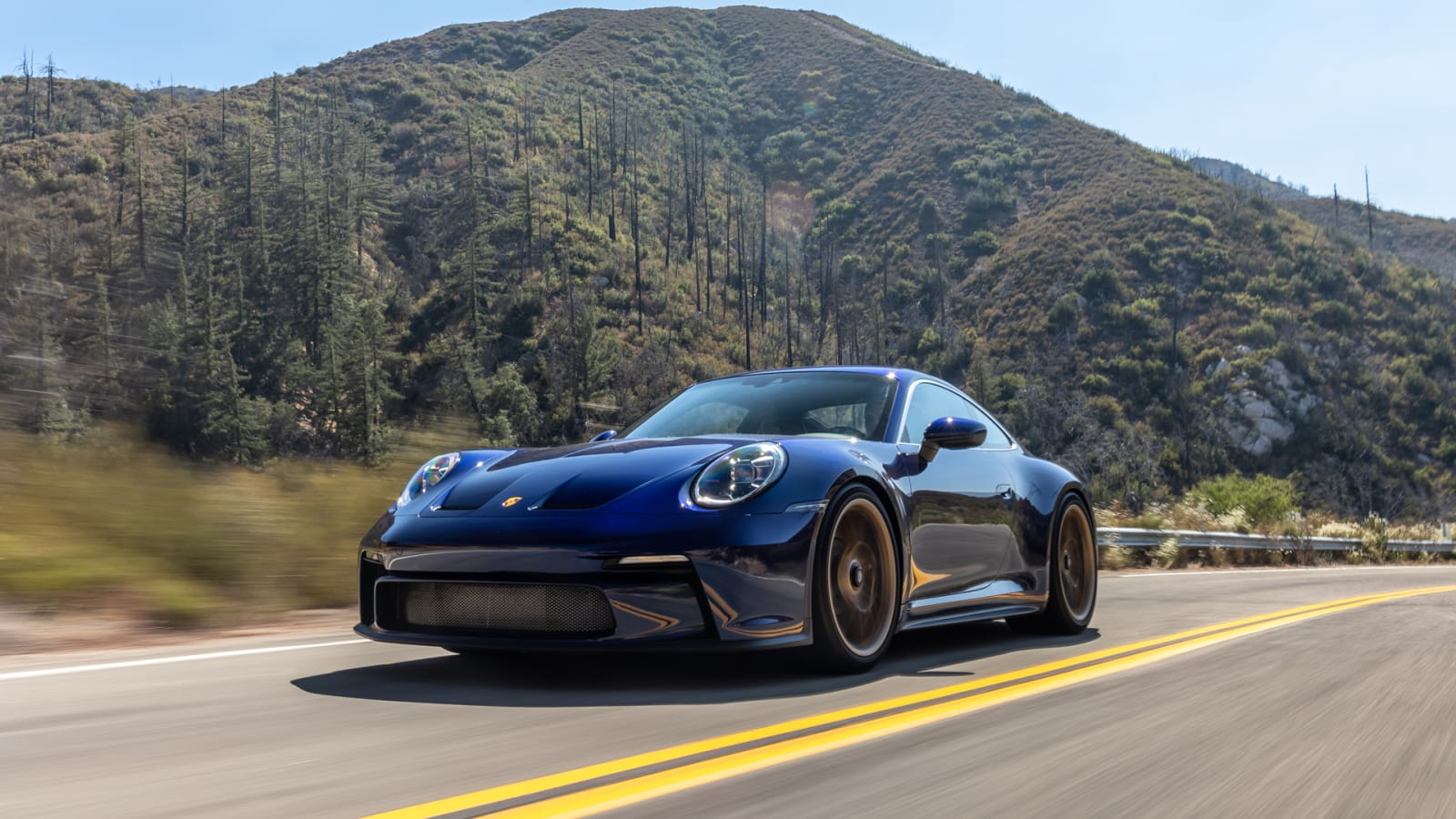
Unfortunately, that’s the extent of my praise for the GT3 Touring as a means for actual touring. It may not be tiresome to steer or change gear, but the rest of the package can get old. Every 911 is prone to elevated road noise, but with sound deadening removed and even more aggressive rubber fitted, certain roads in California’s high desert had me wishing I brought along ear plugs. And although the ride is sufficiently damped to not violently crash you into every bump or expansion joint, the 718 Boxster GTS I drove a day earlier was a considerably comfier car.
I’d also skip the fixed-rake Full Bucket seats in the GT3 Touring – they’re sensationally supportive and comfortable when on track, but their limited adjustability got awfully old after two hours in the saddle. Specifically, the lack of front-end height adjustment put most of my leg weight on my heels and ankles. Get the Adaptive Sport Seats Plus instead.
So rest assured, the GT3 Touring may be de-winged, but it’s not defanged – for better and for worse. If you want the ultimate 911 for firing up the local winding road instead of towing out to a track, it will effectively deliver the exact same capability and experience while looking a lot classier doing it.
Related video:
